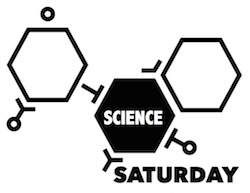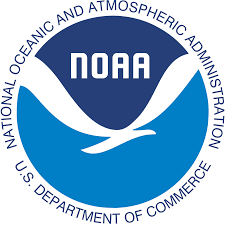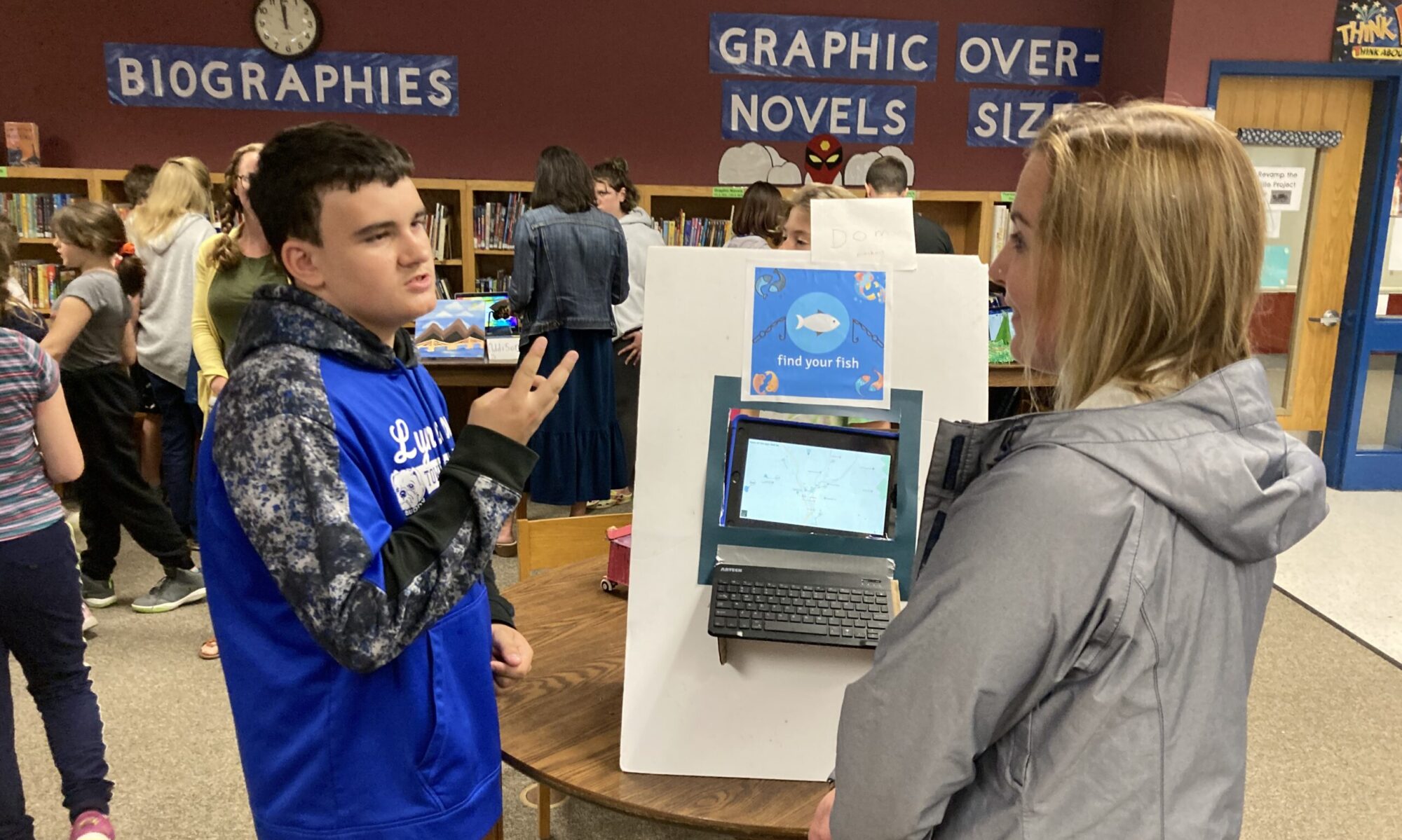 When I was still teaching high school, I was presented one quarter with the option of creating and teaching a science elective. Looking at what my department offered, I noticed a lack of courses that explored the earth sciences. At the time I was getting really interested in weather, and so I created a course called “Weather and Climate.” As you might imagine, students did not exactly flock to the course. Those that did come had a rich learning experience; we structured the course around three large projects, and for our climate change unit we built a setup with an exhaust catcher, specific heat monitor, and CO2 sensor and burned a bunch of different fossil fuels. I felt it was a strong class, but was disappointed that not many students chose to take it. The next year, I expanded the scope of the class, and retitled it: “Natural Disasters.” The student response was… much better. Today I’d like to talk about some of the student-centered learning that can happen when students engage with natural disasters.
When I was still teaching high school, I was presented one quarter with the option of creating and teaching a science elective. Looking at what my department offered, I noticed a lack of courses that explored the earth sciences. At the time I was getting really interested in weather, and so I created a course called “Weather and Climate.” As you might imagine, students did not exactly flock to the course. Those that did come had a rich learning experience; we structured the course around three large projects, and for our climate change unit we built a setup with an exhaust catcher, specific heat monitor, and CO2 sensor and burned a bunch of different fossil fuels. I felt it was a strong class, but was disappointed that not many students chose to take it. The next year, I expanded the scope of the class, and retitled it: “Natural Disasters.” The student response was… much better. Today I’d like to talk about some of the student-centered learning that can happen when students engage with natural disasters.
Floods! Hurricanes! Tornados! Earthquakes! Blizzards! It isn’t always the case that topics in science class are also the subject of movies. Natural disasters are transformative event that affect entire regions. And from an educative standpoint, they offer a powerful way to frame large scale project-based learning opportunities for students. Studies of these events can incorporate earth science, physics, geology, and chemistry; they also offer powerful opportunities for cross-disciplinary work. Students immersed in a study of a natural disaster can also investigate how different levels of government respond, read narrative accounts, write poetry, and learn about how the community that was affected.
More about that last point: we know that in middle school, students are able to make meaningful connections from their learning to their community. Although elementary aged students can learn about issues and events that have affected their community and world, when students reach middle school they are ready to begin to build bridges between their learning and their community. We are lucky here in Vermont to have such a strong community spirit, and young adolescents are ready to engage with it. And our students, if they have been living in Vermont for more than 3 years, have personally experienced a natural disaster right here: Hurricane Irene.
Hurricanes are some of the most fascinating weather events that happen on our globe, and although they are very complex, they are founded in some very basic science concepts – pressure, temperature, density, the water cycle, the coriolis effect, and many more. And, interestingly enough, these are also the types of topics that are included in the NGSS science standards! WIth an eye towards Irene specifically, there are a number primary resources available from NOAA, including a basic overview, the archived real-time weather warnings, and the official measurements. There are numerous videos of news coverage and the aftermath available, and of course, many opportunities for students to conduct in-person interviews.
science concepts – pressure, temperature, density, the water cycle, the coriolis effect, and many more. And, interestingly enough, these are also the types of topics that are included in the NGSS science standards! WIth an eye towards Irene specifically, there are a number primary resources available from NOAA, including a basic overview, the archived real-time weather warnings, and the official measurements. There are numerous videos of news coverage and the aftermath available, and of course, many opportunities for students to conduct in-person interviews.
Using natural disasters to frame a unit or project builds in a lot of student-direction of their own learning. You could choose to have different groups choose their own disasters to investigate and make their own decisions about how to report out. Your class could choose one event and different students could investigate different facets. It is also a great opportunity to collaborate with language arts and social studies instructors. In my Natural Disasters course, I worked with a civics teacher; my class learned the science behind Hurricane Katrina, and the other group of students investigated the governmental and social issues. The classes then came together to learn from each other, and presenters were met with an authentic audience of their peers.
Hold on now, Mark. You’ve gone through this entire blog post without pitching a tech tool. Well, this type of authentic project-based learning is a great space for your students to implement all of their developing 21st century literacies. Students will use technology tools for research, to record and remix audio and video, to capture images, to manage their intragroup workflow, and to create their final products. When students are shaping their own investigations, we can also support them to use the technology tools that work best for them. If that’s a screencast like Explain Everything or Touchcast, then they should use it. If it means using Aurasma to create auras and embed them in artifacts from the storm, they should try it. If they like flipboard, if they want to make an augmented video with Thinglink… you get the idea. A multidimensional interdisciplinary project allows for students to make a lot of decisions. And if they have experience with a number of technology tools, they can, with your support.
Finally, a cool ongoing project where community partners in the tech world are involved with Vermont communities, and may have opportunities for your students are interested in natural disasters, web development, and community involvement: Girl Develop It has launched a civic hacking project to encourage developers to donate their WP expertise to build disaster-response websites for all towns in Vermont. Building up this type of infrastructure will hopefully help our local communities with any future disasters.
Interested in bringing natural disasters to your classroom? Already run a Hurricane Irene unit? Have some ideas that you’d like to share? That’s why we have a comment section! Also, if there’s something great you’re doing in your STEM classroom, be sure to let us know!


Natural Disasters in the Classroom http://t.co/0Jdqk7qDDy
Great post, Mark! Very, very cool.
Fantastic, Mark. And just imagine the opportunities for personalization and the pursuit of proficiencies through such authentic and integrated learning. Especially proficiencies like Vermont’s transferable skills . They seem to leap out of authentic tasks like the ones you describe.
Natural Disasters in the Classroom via @innovativeEd. Great opp to get at PBGRs via PBL. Thanks @misleadamarko http://t.co/5n9snIvZDe #vted
RT @jdownes_tiie: Natural Disasters in the Classroom via @innovativeEd. Great opp to get at PBGRs via PBL. Thanks @misleadamarko http://t.c…
Natural Disasters in the Classroom http://t.co/nzW2ZqFwSG
We explored a lot of the erosion caused by Irene and the July 4th storm a year later…it was fantastic real world learning for our students and an immediate connection for the community and students http://resvt.blogspot.com/2014/10/resvt-podcast-episode-007-grade-3.html